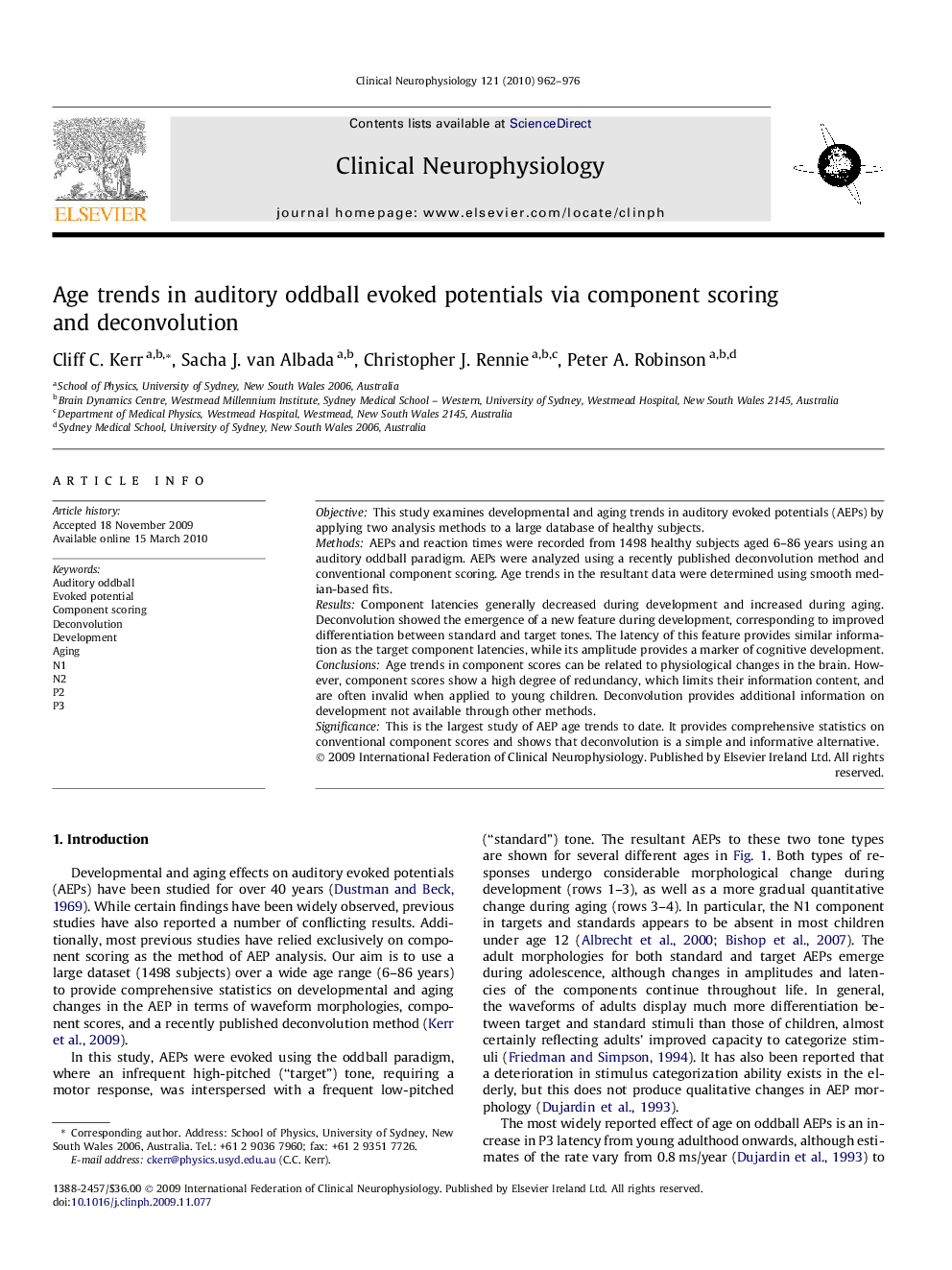| Article ID | Journal | Published Year | Pages | File Type |
|---|---|---|---|---|
| 3045694 | Clinical Neurophysiology | 2010 | 15 Pages |
ObjectiveThis study examines developmental and aging trends in auditory evoked potentials (AEPs) by applying two analysis methods to a large database of healthy subjects.MethodsAEPs and reaction times were recorded from 1498 healthy subjects aged 6–86 years using an auditory oddball paradigm. AEPs were analyzed using a recently published deconvolution method and conventional component scoring. Age trends in the resultant data were determined using smooth median-based fits.ResultsComponent latencies generally decreased during development and increased during aging. Deconvolution showed the emergence of a new feature during development, corresponding to improved differentiation between standard and target tones. The latency of this feature provides similar information as the target component latencies, while its amplitude provides a marker of cognitive development.ConclusionsAge trends in component scores can be related to physiological changes in the brain. However, component scores show a high degree of redundancy, which limits their information content, and are often invalid when applied to young children. Deconvolution provides additional information on development not available through other methods.SignificanceThis is the largest study of AEP age trends to date. It provides comprehensive statistics on conventional component scores and shows that deconvolution is a simple and informative alternative.
